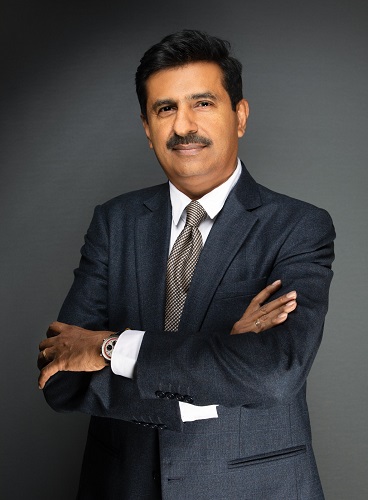Expanding Long-haul Routes Can Help Address India’s Jet Fuel Demand, says Jaideep Mirchandani Chairman of Aviation Major Sky One
The global aviation fuel market, estimated at US$252.39 billion in 2022, is projected to reach around US$935.67 billion by 2032, with a 14% CAGR during the forecast period from 2023 to 2032, according to the Precedence Research report. The Indian aviation sector, too, is witnessing a sustained high consumption rate of jet fuel by carriers. As per the ICRA Limited report, Indias jet fuel consumption has consistently increased since September 2023, rising from 657,000 metric tons to 691,000 metric tons in October. Subsequently, it has stabilized at 690,000 metric tons for the next month. A recent report from S&P Global Commodity Insights attributes the sustained demand for jet fuels to the absence of additional long-haul routes and an increase in the number of short-haul flights.
 |
Jaideep Mirchandani, Chairman Sky One
The fuel efficiency of an airplane is directly influenced by the aerodynamic drag experienced during flight. The aircraft encounters significantly higher drag during climb and descent compared to level flight. For example, in a six-hour flight, an aeroplane takes 30 minutes ascending and 30 minutes descending while maintaining a steady level at a high altitude for approximately 85 percent of its total fuel consumption time. In contrast, a short-haul flight ascends to a relatively lower altitude in 20 minutes, followed by a shorter steady-level flight of 1 hour and 20 minutes before landing. This means that 33 per cent of its fuel consumption time occurs during a high drag period.
“Flying at a lower cruising altitude means the air density would be relatively higher, resulting in greater aerodynamic drag. Short-haul flights have relatively lower fuel efficiency,” says Jaideep Mirchandani, Chairman of the UAE-based aviation conglomerate Sky One.
However, with the consistent increase in demand for point-to-point travel, air carriers are now operating more short-haul flights. He says that long-haul flights, with a journey time exceeding six hours, play a key role in this scenario, and an increase in such flight routes could meet India’s jet fuel demand to some extent.
“Along with the focus on boosting domestic travel, there is also a need to expand flight routes to more international travel destinations. A collaborative effort among stakeholders in civil aviation, tourism, and travel service providers can formulate strategies to enhance connectivity for long-haul travel, particularly to destinations in Europe and other regions,” says Mr. Mirchandani.
He says that India must take cues from some of the leading airports, including London Heathrow, which actively promotes long-haul routes. Last year, it introduced 11 new routes, including the UKs only nonstop connection to Peru.
Mr. Mirchandani adds that an increase in long-haul flights will necessitate more wide-body aircraft. The recent order by Air India, as per reports, includes 70 wide-body aircraft. The civil aviation ministry has also taken favourable decisions, like allowing Indian airlines to take wide-body planes on wet leases. This will surely help to address supply chain issues and increase the number of long-haul flights.
Mr. Mirchandani believes that supportive government policies and infrastructure development could also contribute to the expansion of long-haul routes.
“Another favourable approach could be to develop India as an aviation hub. The government has already appointed a committee to assess the possibilities of transforming Delhi into a major transit hub, akin to global facilities like Dubai and Doha. If the plan materialises, it could make significant changes in India’s aviation sector by facilitating seamless domestic-to-international and international-to-international transfers,” he concludes.
![]()








